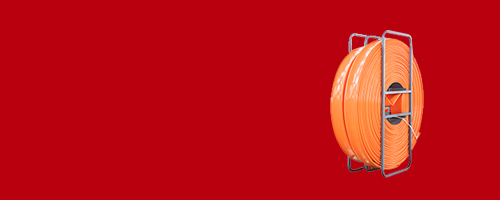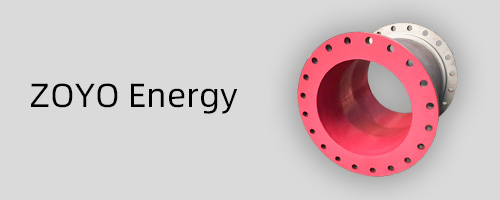
What Makes a Mining Dewatering Hose So Crucial
2025-10-10 09:38
Introduction: The Unseen Lifeline of Modern Mining
In the vast, complex world of mining, where colossal machinery and precious minerals capture most of the attention, there's a humble yet absolutely vital component working tirelessly behind the scenes: the mining dewatering hose. At first glance, it might just look like a large, reinforced tube. But to mine operators, engineers, and site managers, it is an indispensable artery for safety, efficiency, and productivity. Without a reliable dewatering system, an open-pit mine can transform from a hub of resource extraction into a flooded, inoperable pit in a matter of hours.
Here at ZYfire Hose Corporation, we understand that the integrity of your entire dewatering operation rests on the quality of this single component. This comprehensive guide will delve deep into the world of mining dewatering hoses. We'll explore what they are, why they are so crucial, the engineering that goes into making them durable, and how to select the right one for your specific application. Our goal is not just to sell you a product but to empower you with the knowledge to make informed decisions that protect your personnel, your equipment, and your bottom line. As a specialist in high-performance industrial hosing, ZYfire Hose is committed to the principles of Expertise, Authoritativeness, and Trustworthiness (E-A-T), providing you with reliable, well-researched information you can count on.
What is a Mining Dewatering Hose, and What Does It Do?
Simply put, a mining dewatering hose is a flexible pipeline designed to transport water, often containing abrasive solids like sand, silt, and gravel, away from a mining site. The process of "dewatering" is the controlled removal of this water to keep the mine dry and operational.
The primary functions of a dewatering hose are:
Groundwater Control: Mines, especially those dug below the water table, are constantly threatened by groundwater seepage. Dewatering hoses are part of a system of pumps and pipes that continuously remove this water to prevent flooding.
Stormwater Management: A single heavy rainfall can halt operations and create dangerous working conditions. Robust hoses are deployed to quickly channel stormwater away from critical areas like excavation sites, access roads, and equipment storage.
Tailings and Slurry Transport: While often handled by more specialized slurry hoses, dewatering hoses can also be used to move water-saturated mining byproducts (tailings) to designated disposal or settling ponds.
Dust Suppression: Water transported through these hoses is often used in spray systems to suppress dust, a major health and environmental hazard on mining sites.
A failure in any of these functions can lead to catastrophic downtime, safety incidents, and significant financial loss. This is why the choice of hose is not a minor procurement decision but a critical operational one.
The Anatomy of a High-Performance Dewatering Hose: More Than Just Rubber
Not all hoses are created equal. A garden hose would be shredded in minutes on a mining site. A true mining-grade dewatering hose from a reputable manufacturer like ZYfire Hose is a marvel of engineering, built with specific layers to withstand immense punishment.
Let's break down the typical construction:
Inner Tube: This is the conduit for the water and abrasive slurry. It is manufactured from a material highly resistant to abrasion, such as a special compound of SBR (Styrene-Butadiene Rubber) or NBR (Nitrile Butadiene Rubber). A smooth inner surface minimizes friction, which reduces energy costs for pumping and prevents material build-up.
Reinforcement Carcass: This is the muscle of the hose. It's what holds the hose together under high pressure and vacuum conditions. High-tensile textile cords or steel wire helixes are embedded within the hose wall. The pattern and angle of this reinforcement are critical; they determine the hose's pressure rating, suction capability (collapse resistance), and flexibility. For heavy-duty applications, multiple spiral plies of steel wire are used to create an incredibly strong yet flexible skeleton.
Cover: The outer layer is the hose's first line of defense against the external environment. It is compounded to be resistant to weathering, ozone, UV radiation, abrasion from being dragged over rough terrain, and in some cases, even flame resistance. It's typically thick, tough, and often colored a highly visible shade like orange or yellow for safety.
At ZYfire Hose, we go a step further. Our ZYfire-DrainMax HD Series dewatering hoses, for instance, feature an ultra-abrasion-resistant inner tube, a double spiral of high-tensile steel wire for maximum burst and suction strength, and a thick, non-marking cover that is both weatherproof and resistant to tearing. This meticulous construction ensures our hoses can handle the relentless demands of a 24/7 mining operation.
Why Your Choice of Dewatering Hose is a Direct Investment in Safety and Efficiency (The E-A-T Perspective)
Choosing a hose based solely on initial cost is one of the most expensive mistakes a mine operator can make. This is where the principles of Expertise, Authoritativeness, and Trustworthiness (E-A-T) directly translate into on-the-ground performance and cost savings.
Expertise in Material Science: ZYfire Hose employs a team of material scientists and engineers who understand the chemical and physical stresses a hose endures. Our expertise allows us to recommend the right hose based on your specific slurry pH, temperature, and solid particle size. Using a hose not designed for your water's chemical composition can lead to premature failure from the inside out.
Authoritativeness Through Testing and Certification: Our hoses are not just assembled; they are engineered and rigorously tested. They meet or exceed international standards for pressure, vacuum, and material integrity. This authoritative backing means you can trust the published specifications. You are not taking a gamble with an uncertified product that could fail under pressure, literally and figuratively.
Trustworthiness Through Durability and Support: Trust is built when a product performs as promised, day in and day out. A ZYfire dewatering hose is built for the long haul, reducing the frequency of replacements. Fewer replacements mean:
Reduced Downtime: A hose burst can stop work for an entire section of the mine. The cost of idle machinery and labor far outweighs the price of a premium hose.
Enhanced Safety: A burst hose under high pressure is a dangerous projectile. It can cause serious injury and create slippery, unstable ground. A reliable hose mitigates this risk.
Lower Total Cost of Ownership (TCO): While our initial price might be higher than a substandard alternative, the extended service life, reduced maintenance, and prevention of operational stoppages result in a significantly lower total cost over time.
Selecting the Right Dewatering Hose: A Practical Guide for Mine Operators
Making the right choice involves considering several key factors. Use this as a checklist when evaluating your needs:
Diameter and Length: This determines the volume of water you can move. A larger diameter hose allows for greater flow rates. The length must be carefully planned to minimize pressure drop over distance.
Pressure Rating (Working Pressure): The hose must withstand the maximum pressure generated by your pump system, including pressure spikes. Always choose a hose with a rating higher than your maximum operating pressure.
Vacuum (Suction) Rating: If the hose is used on the suction side of the pump, it must resist collapsing. This is where spiral steel wire reinforcement is essential.
Material Compatibility: What is in your water? Is it just water, or does it contain oils, chemicals, or acidic/alkaline substances? The inner tube material must be compatible to prevent degradation.
Abrasion Resistance: This is arguably the most critical factor. Consider the type and concentration of solids in the water. Our ZYfire-DrainMax HD uses a specially formulated rubber compound that has been proven to outlast standard materials in abrasive slurry tests.
Temperature Range: Ensure the hose is rated for the temperature of the water and the ambient temperature of the mining environment.
Flexibility and Weight: A more flexible hose is easier to handle and deploy, saving time and labor. Despite their strength, modern hoses are designed to be as manageable as possible.
Couplings and Fittings: The hose is only as strong as its connection. Use high-quality, corrosion-resistant couplings (e.g., cam-and-groove, flanged) that are properly attached to prevent leaks and blow-offs.
Case Study: ZYfire Hose in Action at a Copper Mine in Chile
A large open-pit copper mine in the Atacama region was experiencing frequent failures with its standard dewatering hoses. The abrasive nature of the slurry, combined with intense UV exposure, was causing hoses to wear out internally and crack externally within 3-4 months. This led to unplanned stoppages and high replacement costs.
They switched to the ZYfire-DrainMax HD Series. After a 12-month trial period, the results were clear:
Service Life Increased: The ZYfire hoses showed minimal wear and were projected to last over 18 months, a 450% improvement.
Downtime Reduced: Not a single hose failure was recorded during the trial, eliminating the associated downtime.
Cost Savings Calculated: The mine's procurement team calculated a 60% reduction in their total annual dewatering hose expenditure, factoring in the longer life and reduced labor for changes.
The mine manager noted, "The reliability of the ZYfire hoses has given us peace of mind. We no longer have to factor in weekly hose inspections and emergency changes into our maintenance schedule. It's a superior product that delivers on its promises."
Best Practices for Installation, Maintenance, and Storage
To maximize the lifespan of your investment, proper handling is key.
Installation: Do not drag the hose over sharp rocks or debris. Use proper lifting equipment for larger diameters. Ensure the hose is not twisted during connection and that it is laying as straight as possible to avoid kinks.
Operation: Avoid running vehicles over the hose. If this is unavoidable, use protective hose bridges. Slowly ramp up pump pressure to avoid a sudden pressure surge (water hammer) that can damage the hose.
Maintenance: Conduct regular visual inspections for signs of cover damage, coupling wear, or bulging. Clean the hose after use to remove abrasive material stuck to the exterior.
Storage: When not in use, store hoses in a cool, dry place away from direct sunlight and ozone sources (like electric motors). Coil them neatly without sharp bends.
Conclusion: Don't Let Your Operations Spring a Leak
In the high-stakes environment of mining, every component must perform flawlessly. The dewatering hose, while often overlooked, is a critical piece of infrastructure that safeguards your productivity and your people. Opting for a cheap, low-quality hose is a false economy that inevitably leads to higher costs, dangerous failures, and frustrating delays.
Invest in a solution engineered for resilience. Invest in expertise you can trust. At ZYfire Hose Corporation, we are dedicated to providing not just products, but partnerships built on reliability and deep industry knowledge. Let us help you keep your site dry, safe, and productive.
Contact ZYfire Hose Corporation today to speak with our technical specialists. We will help you select the perfect dewatering hose for your specific mining application and provide you with a quote that will showcase the true value of investing in quality.
Get the latest price? We'll respond as soon as possible(within 12 hours)









